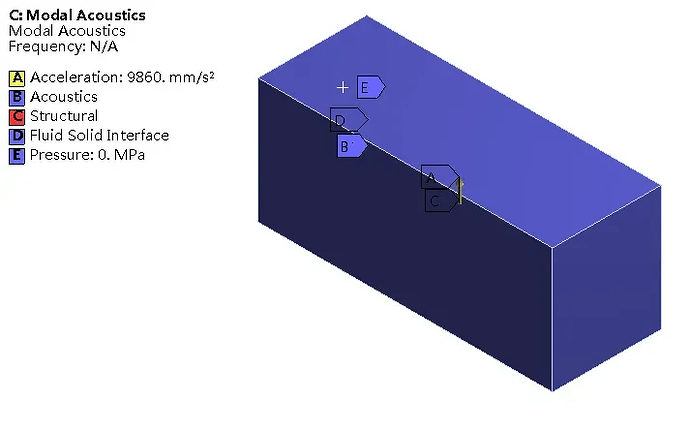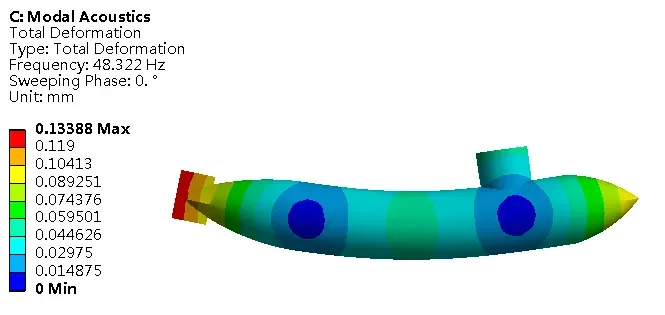1. Background of Underwater Submarine Wet Mode Analysis
When submarines operate underwater, they are not only affected by their own engines but also experience vibrations that excite the surrounding seawater, generating a radiated sound field. Therefore, analyzing the structural vibration characteristics of the submarine is fundamental to studying the distribution of the intensity of this radiated sound field. The underwater vibration modes of the submarine are referred to as the wet modes.
During the modeling process, it is essential to establish a fluid-structure interaction (FSI) model, where the fluid is treated as an ideal fluid under the following basic assumptions:
- Inviscid and Compressible Fluid: The fluid is assumed to be free of viscosity and can be compressed.
- Narrow Amplitude of Sound Waves: The amplitude of sound waves is relatively small, leading to minimal changes in fluid density.
- Adiabatic Wave Propagation: The wave propagation occurs without heat exchange, maintaining adiabatic conditions.
In the newer versions of ANSYS, the Modal Acoustics module is included for acoustic modal analysis. This article will utilize that module for analysis.
2. Mesh Generation for the Submarine Solid Model
- Import the Fluid-Structure Interaction Model: Begin by importing the fluid-structure interaction model of the submarine into ANSYS.
- Mesh Generation:
- For the solid part of the submarine, use the Automatic Method for meshing, with a mesh size set to 0.8 m.
- For the fluid domain, apply the Hex Dominant Method for meshing, with a larger mesh size of 1.5 m. This approach ensures that the fluid region is sufficiently resolved while balancing computational efficiency.
3. Constraint Loading
- Define Acoustic and Physics Regions:
- In ANSYS Mechanical, designate the fluid domain as the Acoustics Region. This allows the software to apply the appropriate acoustic properties during the analysis.
- Set the solid domain (submarine structure) as the Physics Region, enabling the analysis of the structural responses.
- Fluid-Solid Interface:
- Identify the submarine’s surface as the Fluid Solid Interface. This interface facilitates the interaction between the fluid and solid domains, allowing for accurate modeling of the coupling effects.
- Apply Pressure Load:
- On the surface of the fluid domain, apply a pressure load constraint. This simulates the effects of underwater pressure on the submarine’s surface, which is critical for accurately analyzing the wet modes and the resulting acoustic field.
By properly defining the mesh and constraints, the model will be ready for dynamic analysis, allowing for a comprehensive understanding of the submarine’s underwater behavior.
4. Results Comparison
The modal results and mode shapes obtained using the Modal Acoustics module for acoustic modal analysis are as follows. Excluding the rigid body modes, the first-order mode primarily exhibits bending vibrations.



